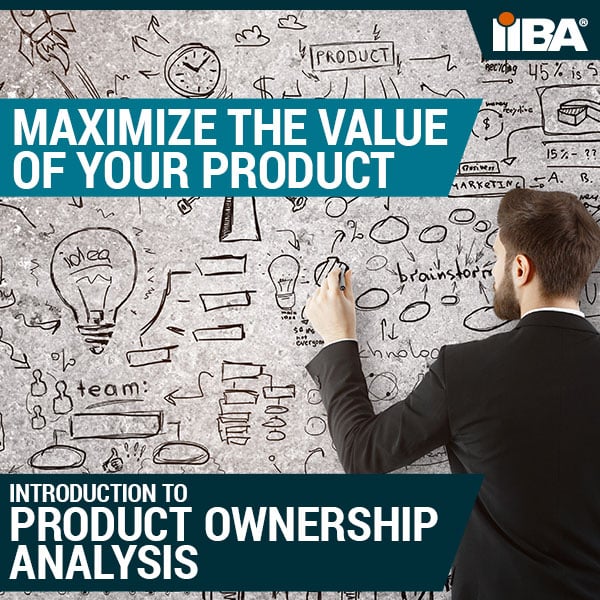Product Ownership Blog Series, Part 2: Getting Good at User Story Mapping and Minimum Viable Product
Receive free IIBA updates and exclusive content!
Every Agile team has a Product Owner, which is one of the three roles defined by the Scrum Guide. Sometimes the individual in this role is a business analysis professional. It is vital that Product Owners master techniques that will help them succeed in their role. Part One of the IIBA four-part Product Ownership blog series discussed Value Stream Mapping and Collaborative Games. Here, in Part Two of the series, User Story Mapping and Minimum Viable Product are explained in detail.

What Product Owners Need to Know About User Story Mapping
User Story Mapping is a technique Product Owners should be fully familiar with. “User Story Mapping is an approach to organizing and prioritizing user stories,” stated Midgley and Serra. “A user story map arranges user stories into a useful model to help understand user needs, identify holes and omissions, and effectively plan holistic releases that deliver value to users and business with each release.”
A User Story Map is valuable because it assists in creating understanding of product functionality and the flow of usage. It also assists with prioritizing product delivery. Also:
- It should be created when an Agile team is beginning to implement a solution, and revisited to keep the “why” behind the solution fresh on each team member’s mind.
- It provides larger context to help team members avoid getting lost in the details and helps maintain customer focus.
- It doesn’t naturally show dependencies and is best for process-oriented contexts.
A few simple directions for creating an effective User Story Map include “framing the problem,” “mapping the big picture,” “exploring,” “slicing out viable releases,” and “slicing out a delivery strategy.” Here’s how you can better accomplish these tasks:
- When framing the problem, ask yourself who the map is for and why it is being built.
- When mapping the big picture, map out the whole story at a high level to create the backbone and focus on breadth, not depth.
- When exploring, fill out the body of the map by breaking down large tasks into subtasks and details.
- When slicing out viable releases, slice the map into holistic product releases.
- When slicing out a delivery strategy, slice the first release of your map into three or more delivery phases in order to release a high-quality product more quickly.
Learn more about User Story Mapping with User Story Mapping: Discover the Whole Story, Build the Right Product by Jeff Patton.
Understanding Minimum Viable Product (and What to Watch Out For With It)
In addition to mastering User Story Mapping, it’s also important that Product Owners pay an equal amount of attention to “Minimum Viable Product” (MVP). MVP “helps avoid cost and risk associated with developing the wrong product by testing a hypothesis, reducing waste, or increasing speed to customers for feedback and adoption,” wrote Midgley and Serra. Minimum Viable Product is invaluable to Agile teams when developing a product, service, or feature.
Remember that MVP provides something to a customer when a company has budgetary constraints or little time. It also reduces risk by allowing Product Owners to collect and analyze feedback when demand is uncertain and before additional resources are invested in.
There are a few things Product Owners should be wary of with Minimum Viable Product. For example:
- MVP shouldn’t be used as an excuse for low quality or low effort.
- MVP is not useful for a simple or clear solution.
- MVP does not mean relaxing your standards.
Go deeper with understanding Minimum Viable Product with Eric Ries’ The Lean Startup: How Today’s Entrepreneurs Use Continuous Innovation to Create Radically Successful Businesses.
Learn about other Agile techniques helpful to Product Owners, including Vertical Slicing and Behavior-Driven Development, coming up in Part Three of our Product Ownership blog series.
About The Author:

Emily Midgley is the President of the Cleveland Chapter of IIBA and has 13 years of business analysis experience in the insurance industry. She led business analysis for programs to implement leading-edge technology like big data and mobile apps. As an Agile coach, Emily brings BA practices to product managers and product owners throughout the enterprise to increase focus on customer value.


